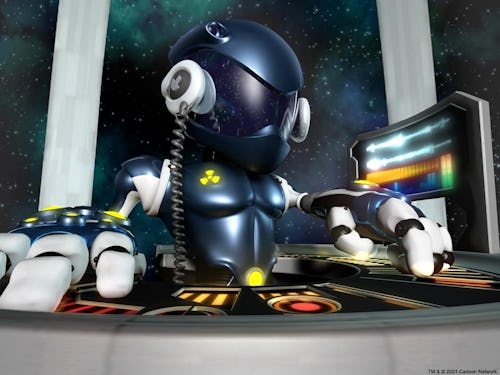
We’ve got bad news for any age-conscious millennials out there — Toonami is now 25-years-old. The programming block for Cartoon Network, and then later on Adult Swim initially launched in 1997 as a weekday spot — getting home from school and throwing on the latest episode of Dragon Ball Z was a formative memory for Cartoon Network kids in the era. Toonami, didn’t hit the late-night airwaves until 2004, ultimately ending in 2008, before being revived in 2012 as a permanent Saturday night fixture.
Now, to commemorate the anniversary, Variety reports that Adult Swim has made plans to release two new seasons of FLCL — FLCL: Grunge and FLCL: Shoegaze — along with a new anime series entitled Housing Complex C.
Both FLCL seasons are currently in production. Grunge will be helmed by director Hitoshi Takekiyo and animated by MontBlanc Pictures, while Shoegaze will be led by director Yutaka Uemura and produced by Production I.G. and Studio NUT.
Information on Housing Complex C is minimal right now — the series will revolve around a character named Kimi who lives in a low-cost housing complex where horrors lurk around every corner. Yuji Nara will direct and the studio, Akatsuki, will be responsible for the animation.
Impeccable presentation—
Part of Toonami’s appeal wasn’t just that it was the only place to find a consolidated and exhaustive range of Japanese animation that included shows like Sailor Moon, Mobile Suit Gundam Wing, and the aforementioned Dragon Ball Z, but also the programming block seemed to take its youthful viewers seriously. Hosted by a humanoid robot named T.O.M (Toonami Operations Module) all of the shows were presented without the same loud, grating chaos of other kid-focused television.
Instead T.O.M spoke with a calm, steady tone, oozing with the same gravity of an older sibling showing you some music you’re not supposed to be listening to. Voiced by Steve Blum, T.O.M would walk viewers through each series with a certain respect for the shows — he wasn’t desperately trying to excite you about, say, the latest episode of Dragon Ball Z because he knew you already were.
Additionally, the music involved in all the promotional spots and interludes between shows was a combination of spacey, drum and bass, and hip-hop, embracing the genres that were percolating within youth culture. In August 2001, Toonami ran an hour-long music video marathon called Midnight Run: Special Edition that famously premiered Daft Punk’s animated video for “Harder, Better, Faster, Stronger.”
Aside from providing English-speaking audiences a selection of Japanese anime that differed from Pokémon, Toonami understood that its viewers interest in television also overlapped with music and other aspects of culture. The block didn’t treat its young audience like a demographic that would be easily influenced through heavy-handed frills and advertisements, instead leveling with them by showing reverence to its own programming.
I’m afraid we might not see something like it again for some time.







